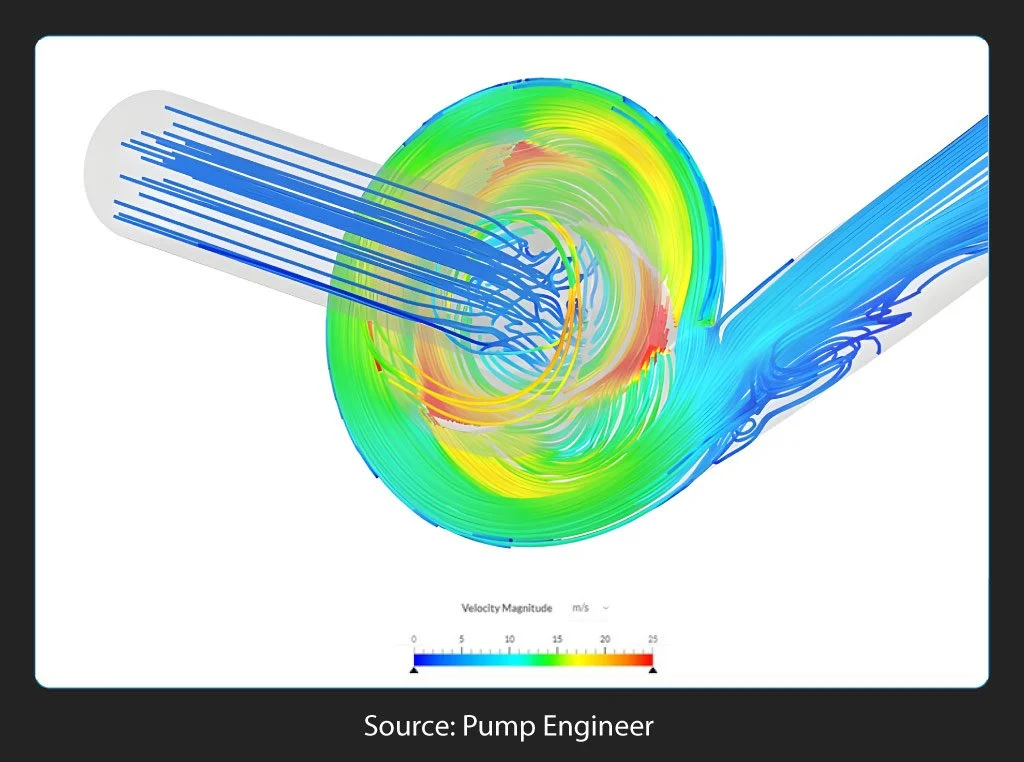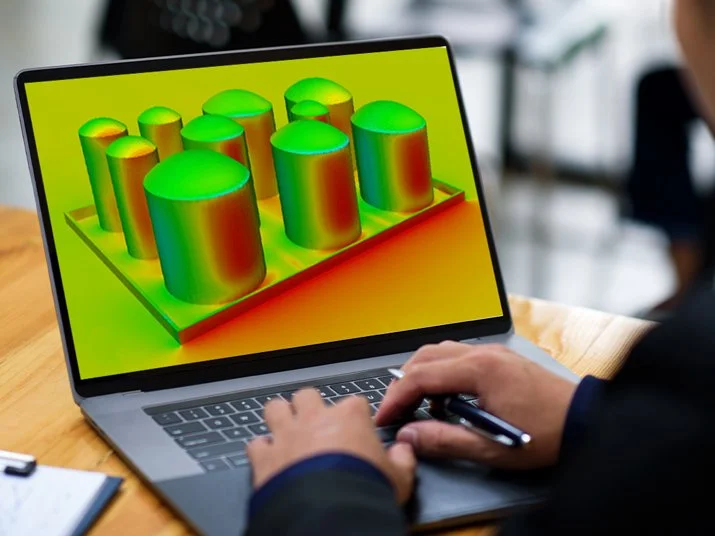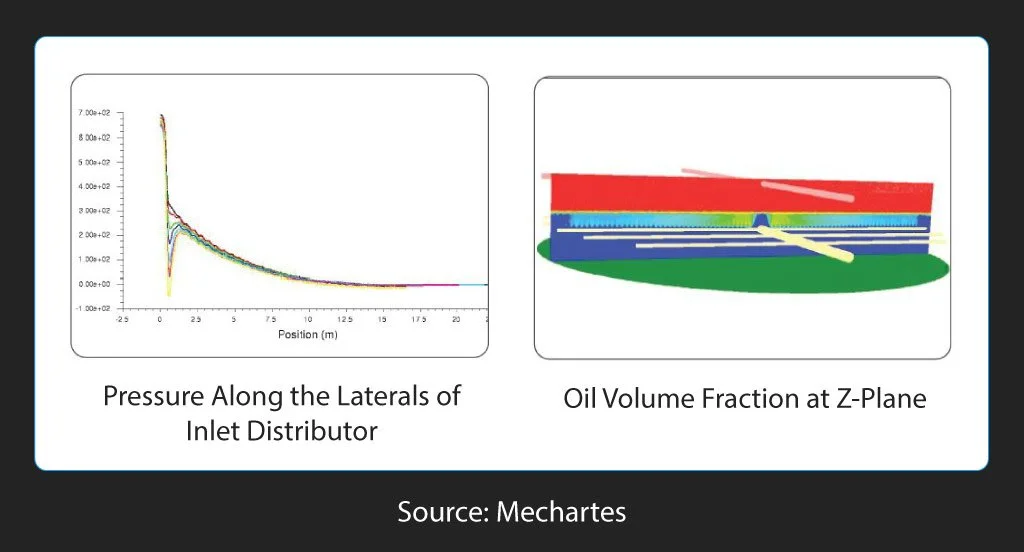How can we securely and efficiently transport and store crude oil, which is the lifeblood of the contemporary world? The answer lies in storage tanks, a vital component of the petroleum industry.
Oil refineries and consumers rely on a consistent supply of crude oil. Hence oil storage tanks play a crucial role in the petroleum sector. However, typical tank designs need help accommodating crude oils with various characteristics.
One effective solution could be CFD simulation and consulting services. By modeling fluid behavior enables individualized designs that boost tank performance and safety.
In this article, we will explore the nuances of different oils, discuss the drawbacks of traditional storage tanks, and highlight the advantages of using CFD consultancy.


Crude oil is a mixture of hydrocarbons that begins as a liquid in underground reservoirs and remains in the same state at room temperature. Depending on the source and composition of crude oil, it can be classified into different types that have different impacts on storage tank design and performance.
Some of the main characteristics and classifications of crude oil types are:
Heavy crude oils are more challenging to transport and store because they have a lower American Petroleum Institute (API) gravity (less than 22.3°) and higher viscosity. On the other hand, light crude oils have a higher API gravity (more than 31.1°) and a lower viscosity, making them easier to pump and heat. The API gravity and the viscosity of medium crude oils fall somewhere in the middle, between 22.3° and 31.1°.
Flow resistance is often expressed in centipoises (cP) or Saybolt Universal Seconds (SUS) and is used to quantify the difficulty of pumping crude oil. Higher viscosity indicates a thicker crude oil.
The viscosity of crude oil is affected by its storage and operating conditions. Deposits of wax or asphaltene, which occur when high-viscosity crude oils are stored, reduce tank capacity and increase maintenance expenses.
The Reid vapor pressure (RVP) or the true vapor pressure (TVP) is commonly used to determine the evaporation rate of crude oil. Crude oil with high volatility is more likely to vaporize when exposed to air, creating an explosive mixture.
This is often done by calculating the total acid number (TAN) or crude oil’s naphthenic acid content (NAC) to determine how aggressively it reacts with metal surfaces. The higher the corrosiveness, the greater the risk that the crude oil will erode storage tanks.
When analyzing a storage tank’s design, a CFD consultancy can utilize one of several CFD modeling methodologies and software packages. Each has its respective strengths and weaknesses and intended outcomes.
Modeling techniques frequently used in CFD include:
RANS models are simplifications that incorporate turbulence models to assess the impact of turbulent flow. They’re quick and straightforward but could only capture some of the flow’s finer points.
These sophisticated models leverage subgrid-scale models to account for smaller-scale impacts while still resolving large-scale turbulent features in the fluid flow. More time and computing power are needed to process these models, but they are more accurate and lifelike.
These models can account for flows involving many fluid phases, such as liquids and gases. They can consider phase transition, interfacial tension, mass transfer, etc. They’re more sophisticated and challenging to install, but they help mimic the characteristics of crude oils that are volatile or caustic.
Mechartes is widely recognized for providing Computational Fluid Dynamics (CFD) consulting services and other sophisticated simulation solutions, especially in the computational specialization of storage systems in the oil and gas industry.
We extensively use CFD to evaluate the efficiency and reliability of various indoor storage systems, such as baffles, mixers, heaters, vents, and other components.
Moreover, Mechartes can help with the design of storage tanks for crude oils of varying densities, viscosities, volatility, and corrosiveness by considering criteria and metrics such as flow patterns, pressure drop, heat transfer, mixing efficiency, sedimentation rate, vaporization rate, corrosion rate, etc.
Mechartes performed CFD simulation and analysis to design tank internals for wet and dual crude storage tanks. The primary objective was to ensure the concentrations of oil and sediments in the final water stream met the end customer’s requirements.

The simulation utilized numerical methods to solve equations for small volumes inside the tank, guaranteeing that the entering mixture was dispersed uniformly around the tank. The fluid domain was modeled using tetrahedral components, while the intake distributor was developed using an unstructured fine mesh.
The analysis yielded useful information, such as:
Mass flow rates through the distributor slots
The flow profile inside the tank
Distribution of oil outlet particle size in the water outlet stream
The concentration of oil in the water outlet
Minimum oil particle size required for proper separation
The oil collection rates
Mechartes used these models to improve the efficiency and efficacy of the tank interior during oil-water separation.
You can learn more about the case study by clicking on the link below:
Evidently, the safe transportation of crude oil is based on an efficient and individualized storage tank layout.
Mechartes, a frontrunner in engineering and IT services has validated the relevance of CFD consulting with oil storage tanks. It has been instructive to evaluate how diverse crude oils vary in density, viscosity, volatility, and corrosiveness and how these factors impact tank structure.
Mechartes also optimizes the tank’s internals to distribute the incoming combination uniformly through fluid behavior modeling using CFD, increasing efficiency and safety.
Learn more about Mechartes and the CFD consultancy offerings for storing tank layouts by visiting their site or contacting them immediately.
Contact us today!